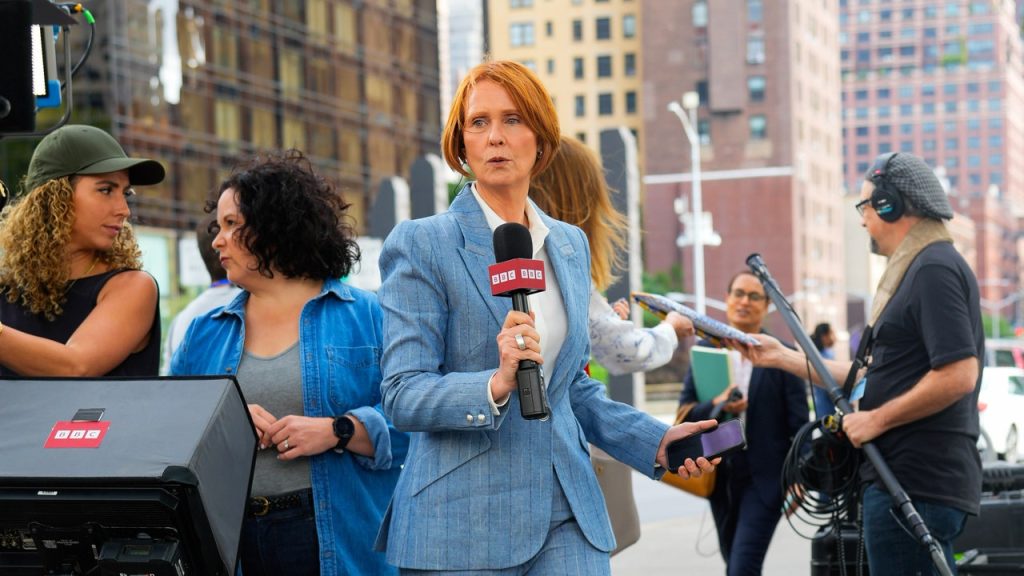The newest installment of “And Just Like That” has brought several tragic developments, including the absence of Samantha, the presence of Che, Charlotte’s use of OpenTable to schedule a dinner, and Carrie’s reluctance to say the word “vagina” on a podcast. However, one of the most egregious changes has been the transformation of Miranda Hobbes. Once a Jil Sander-wearing Harvard grad known for her neuroses, Miranda now sports tattoos and abandons prestigious career moves for stand-up comics who enjoy smoking weed. This drastic shift has led to much speculation and criticism, with many questioning how the character has evolved so unexpectedly.
In the original “Sex and the City,” Miranda was known for her impeccable fashion sense and sophisticated lifestyle, often sporting designer suits and blazers. However, in “And Just Like That,” she has taken on a more carefree and unconventional persona, opting for tattoos and pursuing relationships with non-traditional partners. This departure from her previous image has raised eyebrows and sparked debate among fans and critics alike. The stark differences between the Miranda of the past and the Miranda of the present have left many wondering what prompted this dramatic transformation.
The portrayal of Miranda’s character in “And Just Like That” has been a source of controversy and discussion, with many pointing out inconsistencies and contradictions in her behavior and choices. From her decision to get a tattoo of a cartoon robot to her pursuit of a stand-up comic with a penchant for weed, Miranda’s character development has raised questions about the authenticity and integrity of the show’s storytelling. Fans have expressed disappointment and frustration over the departure of the character they once knew and loved, calling into question the direction of the series and its treatment of beloved characters.
The transformation of Miranda Hobbes from a sophisticated and career-driven woman to a more laid-back and adventurous individual has been met with mixed reactions from viewers. While some appreciate the show’s efforts to explore new dimensions of the character and push the boundaries of traditional gender roles, others feel that the changes have been forced and unrealistic. The evolution of Miranda’s character reflects broader shifts in society’s attitudes towards professionalism, relationships, and self-expression, raising important questions about the depiction of women in popular media and the impact of changing cultural norms.
As the series continues to unfold and explore the lives of its iconic characters, including Miranda Hobbes, fans and critics alike will be watching closely to see how the show addresses the criticisms and concerns raised thus far. Whether Miranda’s character development will be further explored and explained, or if it will continue to diverge from her original portrayal, remains to be seen. The ongoing debates and discussions surrounding “And Just Like That” serve as a reminder of the power of storytelling to shape our perceptions and beliefs, and the importance of representing diverse and complex characters authentically and thoughtfully. Whether Miranda’s evolution will ultimately be embraced or rejected by audiences, her journey remains a central focus of the show’s narrative and a key point of contention for viewers.


